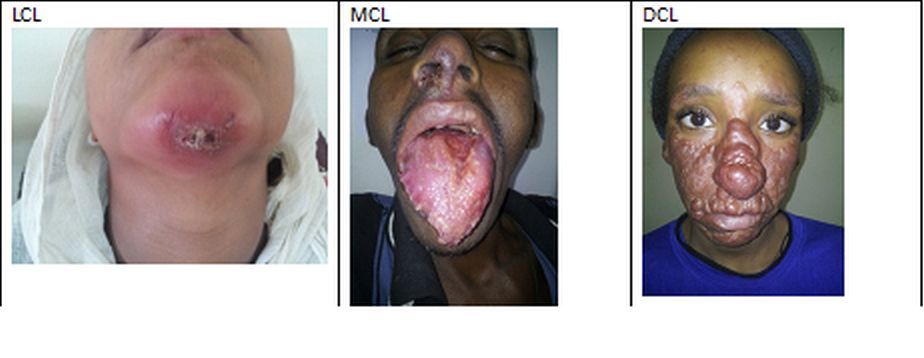Clinical manifestation
Initial lesions correspond to the site of the sandfly bite and start as a small papule that gradually enlarges and forms nodules and plaques. The surface forms crust in the center and may ulcerate. It may affect the mucosal surfaces or it can become disseminated. Based on the extension of the disease, involved sites and way of dissemination it is classified into localized (LCL), mucocutaneous (MCL) and diffuse (DCL).
LCL – Small lesions usually occur on exposed parts of the body (face and extremities). These may be self-healing within 3-6 months’ time, but may also last for years. Spontaneous healing gives life long immunity to re-infection with L aethiopica. Healing leaves a scar.
MCL – Here the lips and nostrils are the common mucosal sites affected. This does not heal spontaneously and requires treatment.
DCL – This is a rare manifestation of L aethiopica that results from specific defect in cell mediated immunity. It manifests with gradual dissemination of nodular lesions involving larger areas of the skin. New metastatic lesions appear resulting from blood stream spread of the infection. DCL is chronic and progressive. It requires long duration of treatment.

Figure 4: Pictures showing cases of LCL, MCL and DCL